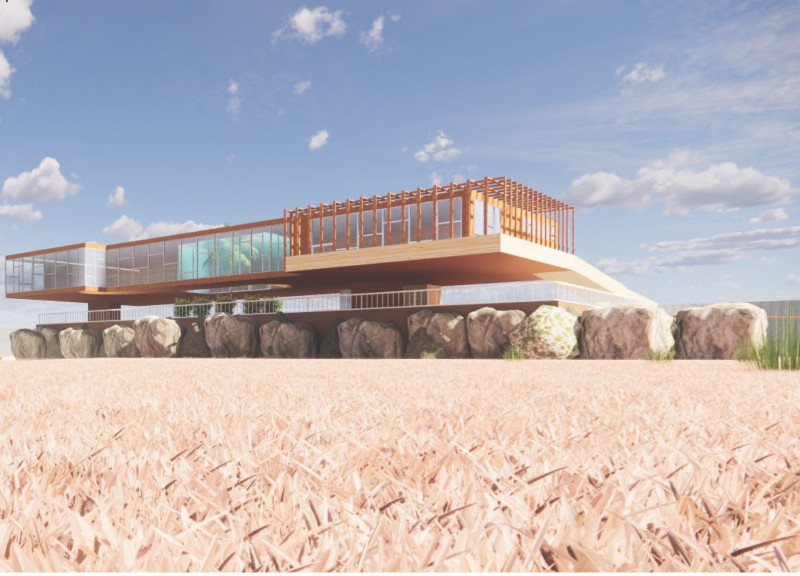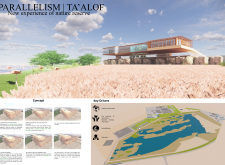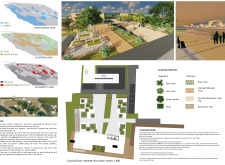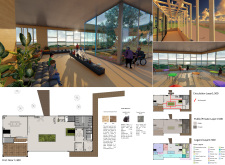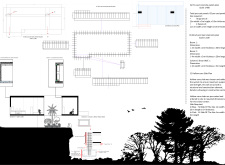5 key facts about this project
"PARALLELISM | TAʼALOF" is located within a nature reserve and is designed to provide an engaging experience while prioritizing ecological awareness and habitat conservation. The design uses a rectangular form that follows the natural lines of the land, connecting thoughtfully with its surroundings. The main purpose of the structure is to serve as a visitor center, where people can learn about local wildlife and ecosystems.
Design Concept
The building’s shape is simple and effective, creating links between indoor and outdoor spaces. By elevating the structure, it enhances opportunities for wildlife observation while ensuring minimal disturbance to the environment. This approach protects the landscape and preserves the local ecology, allowing visitors to appreciate nature more fully.
Integration with Nature
The project incorporates a pre-existing track that guides visitors from the reserve into the building. This pathway is not just functional; it invites an experience where visitors feel connected to the landscape. By integrating the track into the building’s design, the layout encourages movement and interaction with both natural and constructed environments.
Visitor Interaction
On the eastern side, a café offers views of a flamingo lake, providing a chance for visitors to observe wildlife comfortably. This design decision blends leisure with learning, allowing guests to appreciate the local ecosystem. Inside the visitor center, a skylight creates a bright and open atmosphere, inviting exploration of the space and its views of the outdoors.
Material Use
The structure uses precast concrete panels for durability, while SMARTA M50 glass is implemented in the façade for energy efficiency. The landscape features various native plants such as palm trees, Sidr trees, and flower bushes, promoting the area's biodiversity. Different pavement materials, including grass tiles and oak light wooden flooring, enhance the connection between inside and out, creating a unified experience for visitors.
The careful attention to features like the observation areas and integrated paths underlines a commitment to enhancing visitor engagement with nature. The design presents a modern approach to interacting with the environment, making it suitable for sensitive ecological settings.


